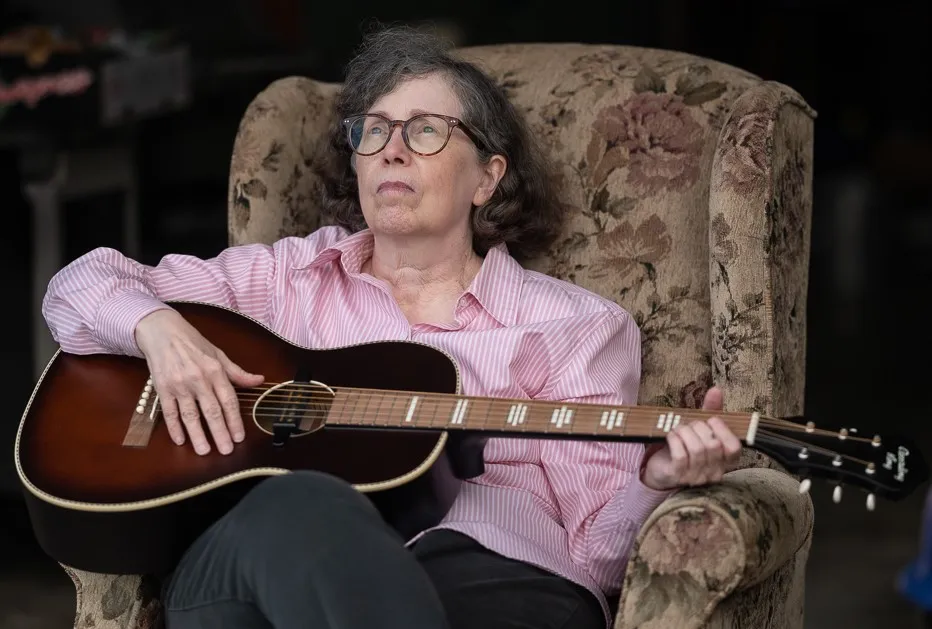
The Lo-Fi Spirit of Linda Smith
A couple weeks ago, I deeply enjoyed reading the profile Claire Biddles wrote in the March issue of The Wire about Linda Smith, the beloved nineties home recording songstress. While reading the feature, I realized a strange little connection between my last blog entry about the lone composer working in solitude to the mechanics of early, lo-fi home recording. Linda Smith’s output in the late eighties through the nineties resided on handmade cassettes recorded at her home on four-track, then later eight-track reel-to-reel. She self-released her music, the cassettes donning photocopied album art. Even when she began to put out some of her records on the indie labels Slumberland and Harriet Records, her approach was ultimately the epitome of the DIY method, capturing the essence of creating and releasing music on one’s own terms. As Smith has said, “At home, you can do whatever you want to do.”
Linda Smith was born in Baltimore, where she would reside for most of her life and career. She was a fan of 60s AM radio growing up, which certainly left an imprint of its sunny, lilting disposition on her own music. Her adolescence, which she spent “waiting for high school to end,” was filled with classical music and old movies. Rock began to pique her interest in the late seventies with the rise of punk and new wave, her attention turning to musicians such as Nico, Patti Smith, The Velvet Underground, The Raincoats, and Young Marble Giants. She took to the latter two especially because, as she’s stated, “there seemed to be a sincerity in their music.”
By around 1979 and 1980, Smith began making her own music. Wanting to be in a band like The Raincoats, she placed an ad in the local free paper for “unschooled players,” ultimately gathering a response from the nearby art school, Maryland Institute College of Art. She spent time in the New York-based band the Woods and Baltimore bands such as The Window Shoppers, The Symptoms, and Ceramic Madonna Head, the first of which took its sonic inspiration from X-Ray Spex, Bush Tetras, and Pylon. She was also a part of Baltimore’s 14K Cabaret scene, where Smith ran sound. The venue featured shows that mixed performance, music, and film, and saw the likes of Beat Happening, Scrawl, and the Magnetic Fields — who Smith eventually opened for twice — on the stage throughout Smith’s time there.

In the late eighties, Smith began recording solo music after buying a four-track Fostex X-15 to make demos for her band. She self-released her first cassette in 1987, titled The Space Between The Buildings, and from there began her series of solo albums crafted from home and distributed primarily on her own. Her solo work featured a stripped-back instrumentation of guitar, keys, and drum machines, her lilting melodies reminiscent of the sixties pop she adored as a child channeled through the ragged charm of the post-punk and indie pop influences of her young adulthood.
Retroactively, Smith’s 1996 album, I So Liked Spring became one of her most popular, in part because of the title track’s inclusion on the 2016 Sky Girl compilation, and the song’s subsequent use in a television show. The song featured lyrics from the twentieth-century poet Charlotte Mew, one of multiple poets Smith set to music including Louise Bogan and Edna St. Vincent Millay. Smith said, “At that point, I was looking for some other expression—some words other than my own—to set to music.”
For Smith, home recording as a process was very intertwined with the music itself. She rarely performed live, only starting to appear on stage more recently. As Kieron Tyler at The Quietus stated, “The recordings are the definitive versions of her songs: live performances were unnecessary as they would not represent what she intended.” She’s discussed how the songwriting process is inextricably linked with the recording process, as she often doesn’t write her material in full beforehand, but instead teases out her songs while in the midst of recording.
Something Smith has discussed during interviews in recent years since the release of the compilation Till Another Time: 1988-1996 is how technology has changed the landscape of home recording, as she now uses Audacity. She’s said, “People nowadays have much better access to home-recorded possibilities. They can make very high-end-sounding records. Whereas back in the ‘80s and ‘90s, you had a four-track, which was pretty limiting. But that was part of the charm of it.”

Lo-fi quality certainly was a byproduct of the limited resources of the times. If you were to record at home, the lo-fi quality was an inevitable result. To this day, lo-fi music is an esteemed method of music making, the rough audio quality signifying intimacy, spontaneity, and authenticity. Now with the advances in technology since the eighties and nineties, where does lo-fi music stand? Is it purely an aesthetic choice? Has the purposeful nature of contemporary lo-fi music caused it to lose some of its luster of authenticity? Does it matter? Signifiers we use to describe and categorize music inevitably shift from their original meanings. Smith’s choice to use the free, open-source software, Audacity, to do her home recording today carries a quasi lo-fi connotation to it, demonstrating how the DIY ethos can carry into technologies that ultimately produce music with a higher audio quality than a four-track can.
What I observe overall about Linda Smith’s process was creative independence while engaging with collaborators. Her DIY approach gave her the freedom to record on her own time, write songs and fashion cassettes with her own aesthetic, and eventually work together with figures like Calvin Johnson to distribute her music, using every accessible resource at her disposal. Her work proves that no matter how big or small your resources are, you can create something that could draw people in for decades.
– Hannah Blanchette
March 28, 2024 | Blog